Yunnan Province with an area of 394,100 square kilometres and a population of about 46 million (2010), is famous for its landscape and scenery, biodiversity, ethnic groups and their culture, tea and natural resources. I have been a frequent visitor to Kunming, capital city of the province since my brother Lawrence moved there in 1999. I have travelled fairly extensively in northern Yunnan. This time, I decided to travel south to Xishuangbanna and overland to Laos.
Yunnan is the home of pu’ er tea. Pu’er in southern Yunnan was the starting point of the old ‘Tea Route’. Of China’s 56 recognised ethnic groups, 25 groups are found in Yunnan. It also boosts numerous star attractions including Stone Forests of Shilin, Old Town of Lijiang, Three Parallel Rivers of Yunnan Protected Areas (all three are World Heritage Sites), Dali, Xishuangbanna and Shangri-la. Last year, Yunnan received over 6.6 million overseas visitors.
July 8-12: Kunming
Kunming has been described as ‘Spring City’ for its nice weather and flowers. While Hong Kong’s summer is very hot and humid, Kunming is cool and dry. I always enjoy coming to Kunming to stay with Lawrence’s family.
July 13: Kunming – Jinghong (550km; 6 hrs)
Yuenwen (my HKU classmate) and her husband, Wai Teng, were in Yunnan on holiday. They joined me to visit Xishuangbanna, which is an autonomous prefecture of the province for the Dai people (population: about one million).
We took a bus and had a most pleasant journey to Jinghong. The road winds through different terrains including over 20 tunnels. The scenery is fantastic with mountains in mist and clouds, rain and sunshine, rainforests as well as tea and rubber plantations, maize and rice paddy fields.
Jinghong, capital city of the region, is charming and green with roads lined with palm trees. The Lanchang River (which is known as Mekong River outside China) flows through the city. Jinghong has an air and free, relaxing, laid-back and tropical atmosphere not found in other Chinese cities.
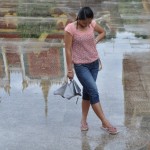 |
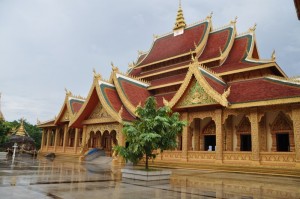 |
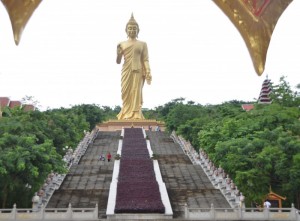 |
Yunnan is the home of the world famous Pu’ er tea. Yuenwen loves tea. We therefore made a trip to Menghai, the starting point of the Tea Route (which is less famous than the silk route). The route includes several branches i.e.to Tibet (then Nepal and India), Beijing, Vietnam, Burma and Laos.
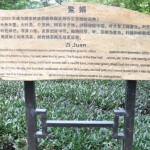 |
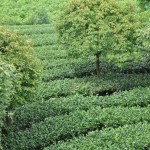 |
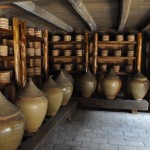 |
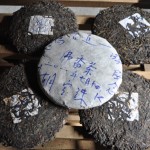 We arrived at a 1500-hectare tea plantation which includes two museums (one on pu’ er tea and another on the role Yunnan played during World War II), a caravan inn, tea workshop which demonstrates tea-making, an old house of a tea merchant and a research centre. All the structures/buildings are original and have been moved here. We took an electric train to visit various spots. This attraction has been opened for a few months and is nicely designed. But more needs to be done to make the Tea Museum more interesting and informative. I brought nine tea cakes as souvenirs for my brothers, nieces and nephews. It takes several years for the tea to mature. I hope the tea cakes will appreciate in due course!
We arrived at a 1500-hectare tea plantation which includes two museums (one on pu’ er tea and another on the role Yunnan played during World War II), a caravan inn, tea workshop which demonstrates tea-making, an old house of a tea merchant and a research centre. All the structures/buildings are original and have been moved here. We took an electric train to visit various spots. This attraction has been opened for a few months and is nicely designed. But more needs to be done to make the Tea Museum more interesting and informative. I brought nine tea cakes as souvenirs for my brothers, nieces and nephews. It takes several years for the tea to mature. I hope the tea cakes will appreciate in due course!
July 15: Jinghong – Jino Mountain – Elephant Valley – Daizu Garden – Jinghong
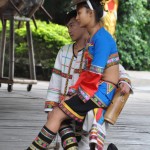 |
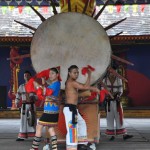 |
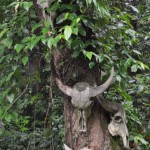 |
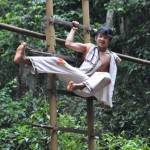 |
Yunnan is known for the tropical forests and nature. We hired a taxi and set off at 7:30am to visit three attractions. We first went to Jino Mountain to visit the Jino tribe which is the 56th minority group recognised by the central government in 1970s. The group has about 20,000 people scattering in some 40 villages in the region.
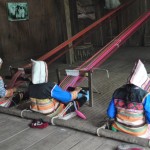 |
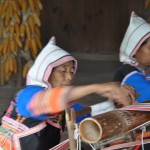 |
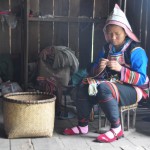 |
Each group of visitors is received and accompanied by a local guide who explains their customs. We followed a standard route and visited a small exhibition hall with artifacts and pictures and saw a traditional long house which can house several or dozens of families from the same clan (though each family has a separate room). We had fresh fruit and delicious roast pork while enjoying a traditional dance performance. On the way back to the entrance, we stopped at several locations to see iron, wine, bamboo – spoon and container making. I find the Jino’s traditional method to select the strongest and fittest most interesting. A Jino mother used to give birth in the open by squatting. Cold water was poured over the new-born baby. If he/she survived, the mother and baby would stay in a separate area in the long house for 13 days where the mother would be provided with the nourishing food.
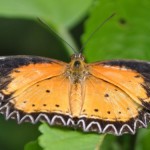 |
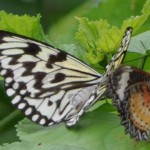 |
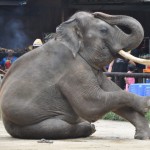 |
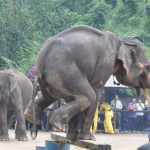 |
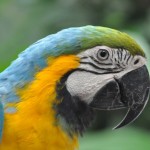 |
Our second stop was the Elephant Valley. We were shocked to find some 20 tourist buses with over a thousand tourists! In any case, this eco-tourism spot is well-designed with many attractions. We spent over two hours in a butterfly house, an aviary and a 2-km tree-top walk to see the rainforest. There is also a museum on elephants which is informative. But as we had to rush back to see an elephant show at 1:30pm, we could only spend 10 minutes to see the exhibits. The highlight is the variety show by four clever and well-trained elephants. They play football, dance to music and stand on their front or hide limbs. It is our time to watch such an interesting performance.
Our final stop was the Daizu Garden, a popular attraction, at Ganlanba, which is actually a group of Dai villages. We also saw a dance performance and what the Dai people do during their water splashing festival during their New Year period. The Dai tribe is similar to the Thai and they have the same New Year and water splashing festival.
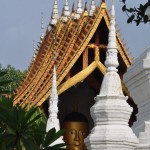 |
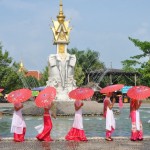 |
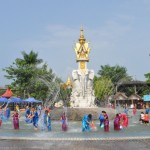 |
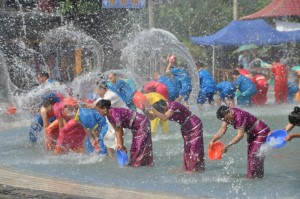 |
July 16: Jinghong – Mengyuan – Mengla (about 180km)
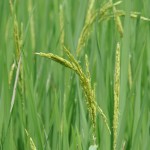 Yunnan is covered with rainforests in the south close to the Laos border. We visited the Mengyuan Wonderland which occupied some 3,000 hectares of land with limestone rainforest, karst landscape and caves. It is only possible to visit the 1.4km-long Cave No 1 as Cave No 2 and 3 are yet to be open to the public. I have seen many caves both in China and abroad but still find the caves impressive. A clear water river flows through the cave which has two large chambers and three huge platforms separated by four long corridors. There were few visitors and we had a nice time exploring the cave. But I find the lighting too artificial and the colour bulbs distasteful, destroying the cave’s beauty and the atmosphere. I hope the management can learn from the best examples overseas and redesign the lighting.
Yunnan is covered with rainforests in the south close to the Laos border. We visited the Mengyuan Wonderland which occupied some 3,000 hectares of land with limestone rainforest, karst landscape and caves. It is only possible to visit the 1.4km-long Cave No 1 as Cave No 2 and 3 are yet to be open to the public. I have seen many caves both in China and abroad but still find the caves impressive. A clear water river flows through the cave which has two large chambers and three huge platforms separated by four long corridors. There were few visitors and we had a nice time exploring the cave. But I find the lighting too artificial and the colour bulbs distasteful, destroying the cave’s beauty and the atmosphere. I hope the management can learn from the best examples overseas and redesign the lighting.
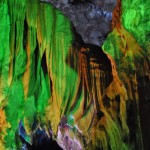 |
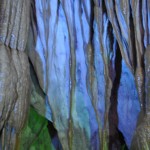 |
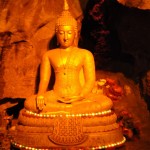 |
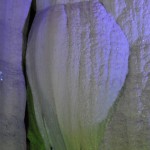 |
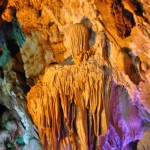 |
We went to the Skytree National Park near Mengla in the afternoon. We had lunch in a restaurant owned by an Aini family (a minority group) with delicious free-range chicken, steam sticky rice with roast dried meat, a chicken rice soup and some vegetables. The lunch for four cost less than 200 yuan. It’s indeed great value for money.
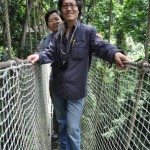 Yuenwen and Wai Teng like poems, literature and history. This is their first time in a rainforest. We spent some three hours exploring this well-designed park which boosts the longest tree-top walk /sky corridor in the world. We had to take a boat ride before following the trail to visit a dozen scenic spots. We spent more than 20 minutes on the tree-top walk and took a path to a fresh water swimming pool deep in the forest. Had I had my swimming costume on, I would have had a dip in this wonderful natural setting! We then passed through many valleys and saw the sky-trees who can reach 80-100m high. There are good explanations about the trees, insects and their inter-relationship. China has made a lot of progress in preserving national parks and this park is a successful example.
Yuenwen and Wai Teng like poems, literature and history. This is their first time in a rainforest. We spent some three hours exploring this well-designed park which boosts the longest tree-top walk /sky corridor in the world. We had to take a boat ride before following the trail to visit a dozen scenic spots. We spent more than 20 minutes on the tree-top walk and took a path to a fresh water swimming pool deep in the forest. Had I had my swimming costume on, I would have had a dip in this wonderful natural setting! We then passed through many valleys and saw the sky-trees who can reach 80-100m high. There are good explanations about the trees, insects and their inter-relationship. China has made a lot of progress in preserving national parks and this park is a successful example.
I said farewell to Yuenwen and Wai Teng at Mengla. The driver took them back to Jinghong while I would begin my journey in Laos. I stayed in a guesthouse next to the bus station and left for Luang Nam Tha, Laos at 9am on July 17.
Remarks
I had a good rest in Kunming and spent my time in uploading trip notes and photos on Ethiopia, Kenya, Tanzania and Bhutan to my website. My stay in Xishangbana though short, is pleasant. I enjoy the company of Yuenwen and Wai Teng .
Xishuangbanna with its forests, natural beauty as well as ethnic groups is an attractive destination. Yunnan is indeed one of the key eco-tourism regions. I travelled over 800km from Kunming to the Sino-Laos border and am amazed by China’s excellent highway network system built up in the last decade. There is a plan to construct a railway from Kunming to Laos. When this project is completed, this will further shorten the distance between China and Indochina with Kunming as the gateway to the ASEAN countries. I look forward to my first train journey to Laos!


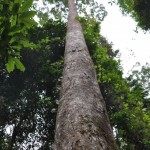
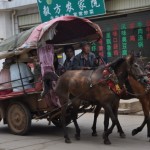
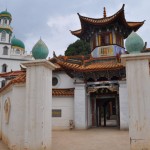
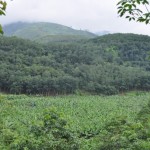
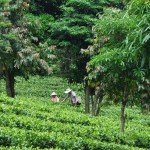
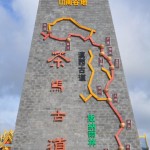
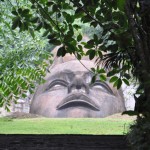
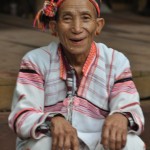
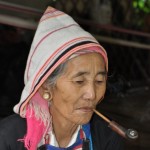
Hi, Sarah, BRAVO! Your travel blog site is looking so good now, I am happy for you. Friends can enjoy and share your experience even though they may not be able to play ‘professional tourist’ like you.
I am jumping from continent to continent, but it must take me a fair while to grasp and follow the intensity and immensity of your adventures.
Were the nice pictures in this post taken with your ‘old’ SLR ?? before it fell into ……..
Sarah, Yunnan is my first pick in reading your travel blog b/c YW mentioned it to me.
I enjoy reading thro’ the lines with background,/cultural information, descriptive details & personal impression.
Am particular interested in the Rainforest and ethnic tribe – and, the traditional practice of child birth makes me give more thought to the relationship betw. human/nature.
Sarah:
It turned out that I did not have much time to browse your blog till now. I followed the recommendation of Ming Kit to read this Yunnan blog. Yes very interesting. Just hoping I will have a chance to visit. I remembered Yunnan from the famous romantic swordsmen novel of Jin Yung. One of the characters was Lord Duan from the Kingdom of Yunnan.. Actually in Canada I did meet somebody from Vietnam and his last name was Duan. He said his ancestors were from Yunnan. Interesting! Really enjoy following you to go around the world! Take care!
Paulina